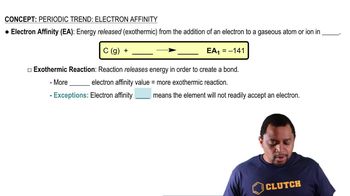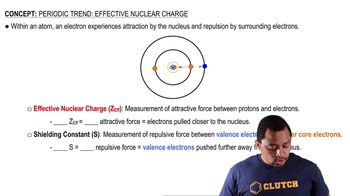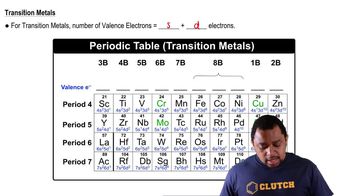Here are the essential concepts you must grasp in order to answer the question correctly.
Electron Affinity
Electron affinity refers to the amount of energy released when an electron is added to a neutral atom in the gas phase. Elements with large negative electron affinities tend to readily accept electrons, indicating a strong attraction between the incoming electron and the nucleus. This property is crucial for understanding the reactivity of nonmetals, particularly halogens, which typically have high electron affinities.
Recommended video:
Effective Nuclear Charge (Zeff)
Effective nuclear charge (Zeff) is the net positive charge experienced by an electron in a multi-electron atom. It accounts for the shielding effect of inner-shell electrons, which reduces the full nuclear charge felt by valence electrons. A high Zeff means that valence electrons are held more tightly by the nucleus, influencing an element's ability to attract additional electrons.
Recommended video:
Valence Orbitals
Valence orbitals are the outermost orbitals of an atom that contain the valence electrons, which are involved in chemical bonding. The occupancy of these orbitals—whether they are filled or have vacancies—affects an atom's reactivity and its ability to gain or lose electrons. Elements with vacancies in their valence orbitals are generally more reactive, as they can easily accept additional electrons.
Recommended video:
Transition Metals Valence Electrons



